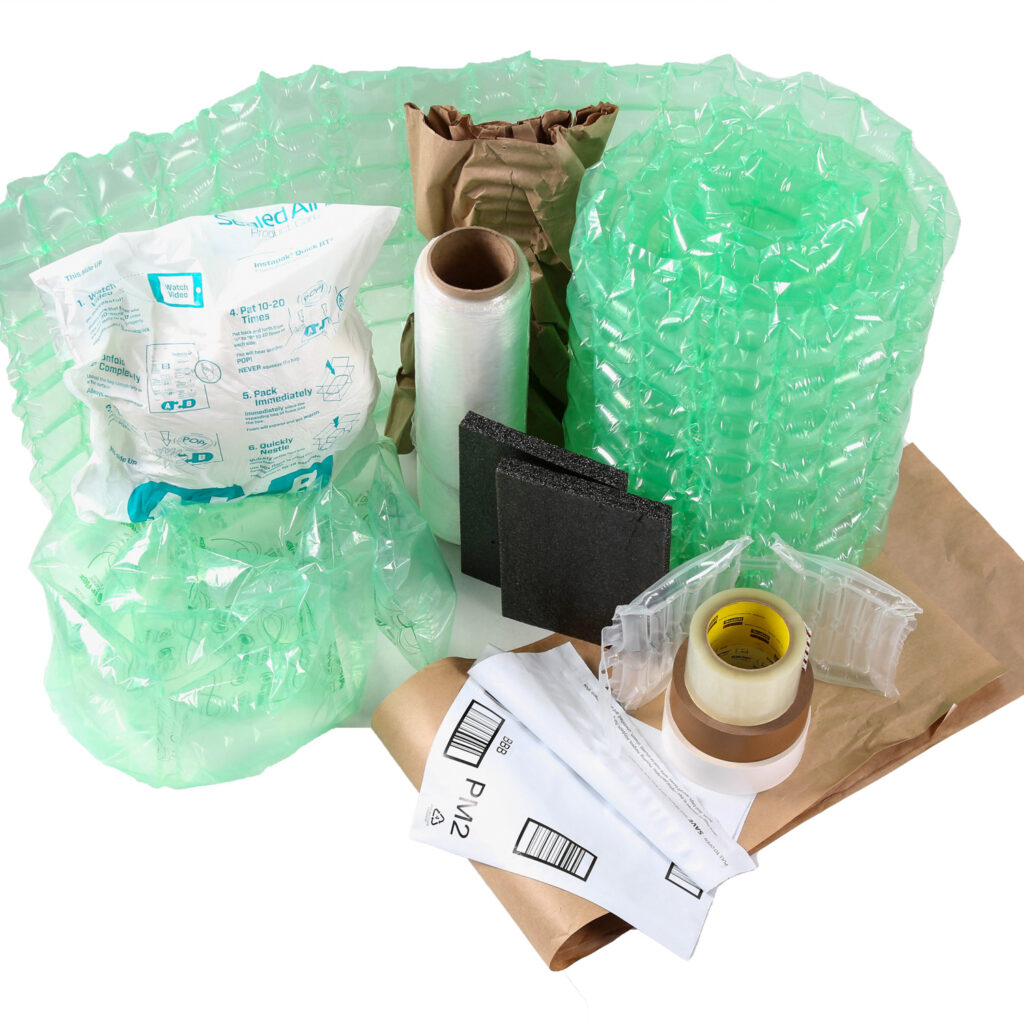Paper or plastic? A question we are accustomed to hearing at the supermarket as to how we would like to transport groceries home. But what about in terms of a void packaging solution? There have been many types of void fill materials used in the past, including loose fill/peanuts, bubble, newsprint, kraft paper, inflatables, die cut corrugated shapes and shredded cartons.
Paper
Paper has its advantages as it cushions and adds a block and brace effect depending on the type of paper substrate used. The most basic fill paper offering comes in roll and sheet forms. It is also available running through automated equipment. The equipment will typically transform single or multi-ply roll stock into a crimped log with bulk to help shape within a carton and does a better job at cushioning. There are many manufacturers that produce systems that run “specific” paper which can only be used on their particular system due to roll width and other proprietary features. There are also paper systems used in a centralized shipping set-up that can detect the void packaging and automatically dispense the amount of paper needed for a particular pack. There is no scientific method as to how it is put into the box and overall does a nice job of securing the contents. Paper also offers “green” benefits by being 100% recyclable and can be made using recycled content. This is important to customers that want an environmentally friendly option and one that provides sustainability.
Paper does not come without its disadvantages. It does compress and is left to the subjectivity of the associate packing the box; sometimes too little could be used and the product within the carton is left to move around and potentially get damaged. Another is that it adds weight to the overall shipping carton and could cause a pack to move up to another weight limit and potentially increase shipping charges.
Inflatables
Inflatable void fill cushioning, commonly known as air bags or air pillows, has come down in mil thickness from 2.5 mil just a few years ago to under 1.0 mil. However, it still retains its strength due to advancements in film technology. In a world where sustainability is important, a benefit when you dispose of the bags after a carton is shipped is that they are reduced to less than 1% of their original volume when deflated. For the environmentally conscious, the bags can be dropped off at a recycling center for disposal. Inflatables are easy to use and don’t cause dryness to the hands or paper cuts. It has a fairly short learning curve if a company is packing with paper and switches to inflatables. They are light and can be custom printed for additional company branding which is common in the Ecommerce space.
There have been advances in this arena with different pillow configurations and styles of bags to mimic bubble cushioning and bendable tubes and patterns for more flexibility. Air pillows are also made with recycled materials but not as much as paper. There have been advances in biodegradable additives to help the degradation of the plastic in traditional landfills.
Some complaints when using inflatables is that there is more manipulation packing the box and associates spend more time on it which can be alleviated by training how to use the right size bag and fill amount. Another is that they pop inside the box, which is true if there are sharp items inside. At that point it could be a combination of the two materials as opposed to just one, depending on the product mix of the end user.
Which Should You Use?
In terms of labor, the ability to quantify using paper vs. inflatables is common through time studies. This is done by having the same associates pack the same cartons and void with both materials and calculating the throughput rate. Other variables that come into consideration and should be constant for both are:
- If an order has to be quality checked
- If the package arrives to the associates through a centralized system
- If they need to remove the packs from picking carts.
In terms of price, many analyses have been done comparing the two substrates and depending on the size of the void packaging being filled, more times than not, inflatable bags are the overall winner. Since air is in the bag, it is more cost effective and easier to dispose of. This would not be the case, for example, if the carton being filled was an 8” x 8” x 8” with minimal void. In this case, only a little paper would be required and even the smallest air cushion may not fit.
With many new developments in sustainability on the horizon, new opportunities have presented themselves to reduce or eliminate paper and inflatables through automated tray formers with lids and other semi-automated equipment which reduce the overall dimensional weight of the carton.
Because every scenario is different and there are many options in both paper and inflatables available, it is best addressed with a free assessment done by a Premier Packaging representative who can analyze the end users application, shipping parameters and any budget restraints. Because we are material neutral, we are able to offer solutions with a total transparent approach.

